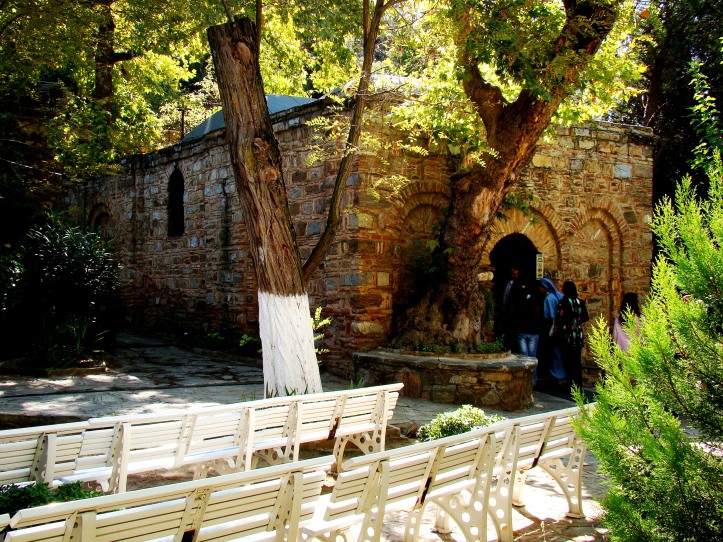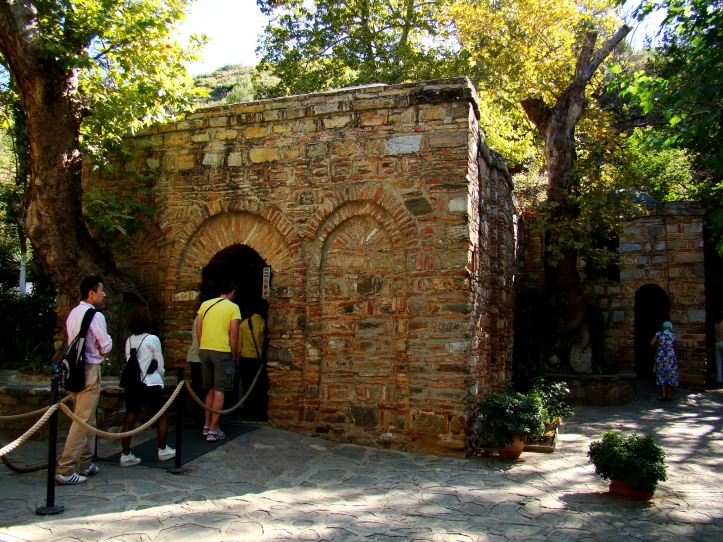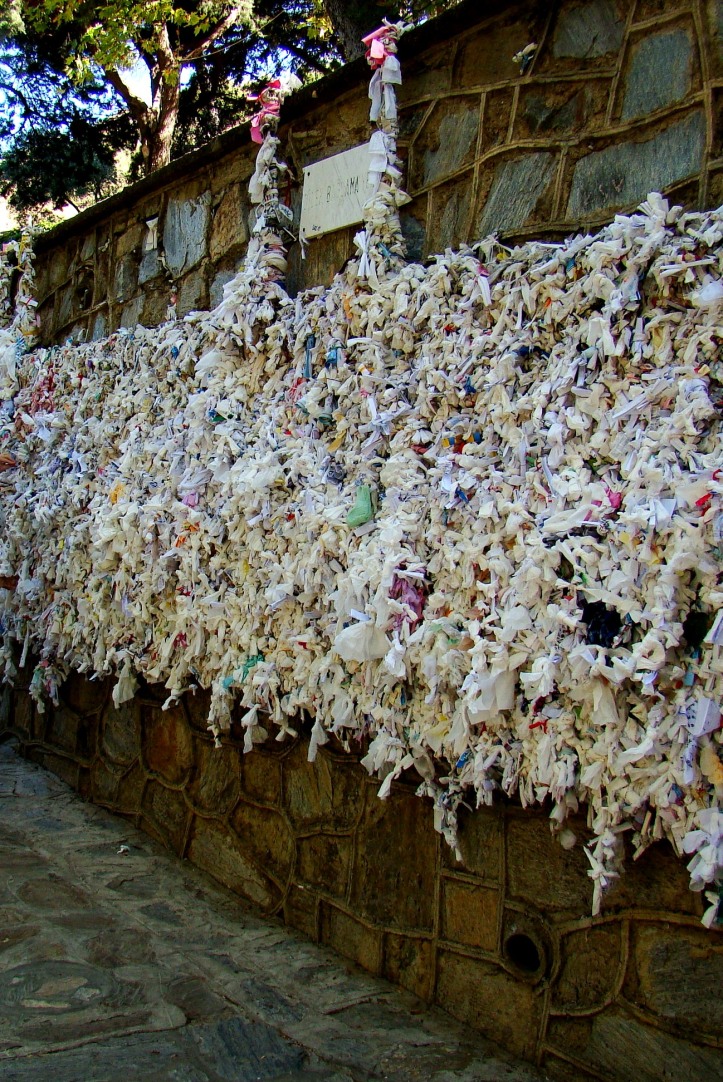
The best way to start your adventure in Ephesus is with a little history on the area and by visiting the Church or House of the Virgin Mary. It is not just a religious site but also a big part of the history of the area and a very interesting and beautiful place to visit. The House of Virgin Mary is located on the top of Mt. Koressos, “Mount Nightingale” in Turkish, about 9 km from Ephesus. It is hidden in a lush green forest at the top of the mountain and is said to be the place where Mary may have spent her last days. That she came to the area with Saint John, who spent several years in the area to spread Christianity.

It is a typical Roman house, entirely made of square stones. In the 4th century AD, a church, combining her house and grave, has been built. The shrine itself is not extensively large, but may rather be described as a modest chapel. As I entered the chapel I was met by one single large room holding an altar with a large statue of the Blessed Virgin Mary.
On the right side, a smaller room lies, traditionally associated with the actual room where the Virgin Mary is believed to have slept. Today this bedroom and praying room is known as the Christian church area and a room with a fireplace is now a chapel for Muslims. Unfortunately only the central part and a room on the right of the altar were open to visitors.

Paul VI was the first pope to visit this place in the 1960’s. Later, in the 1980’s, during his visit, Pope John-Paul II declared the Shrine of Virgin Mary as a pilgrimage place for Christians. Catholic pilgrims also visit the house based on the belief that Mary, the mother of Jesus, lived there until her Assumption (according to Catholic doctrine) or Dormition (according to Orthodox belief). It is also visited by Muslims who recognize Mary as the mother of one of their prophets. Every year, on August 15th a ceremony is organized to commemorate Mary’s Assumption.
Another interesting place is the “Water of Mary”, a source to be found at the exit of the church area. This fountain has a rather salt water source and is said to hold curative properties. People stand in line to drink this water or to fill water bottles so that they can take this water home for friends or sick family members. This water is also believed by some pilgrims to not only have miraculous powers of healing but also powers of fertility.

Outside the shrine is a “wishing wall” which pilgrims have used by tying their personal intentions on paper or fabric. People add their wishes to this wall which is then believed to be blessed by the Virgin Mary. So remember to take a little piece of cloth or white paper along so that you can tie up your own wishes.










Informative, Thanks for educating me
Saba
LikeLiked by 1 person
Thanks for joining me on this excursion Saba!
LikeLike
its like in a sort of eden. never knew of this place!
LikeLiked by 1 person
Its one of those hidden gems that you stumble upon.
LikeLike
Fascinating! We see a lot of wishing walls at temples here in Japan, too, although the wishes are usually on little wooden plaques.
LikeLiked by 1 person
I have seen those, they are beautiful!
LikeLiked by 1 person
I agree with the other comments – fascinating. I did not know that Mary spent her last days in Turkey. The wishing wall reminds me of trees I saw in China hung with bells where you made wishes for your family members and hung them up. Have you ever see those?
LikeLike
I have never seen those in China and would love to. It is quite interesting how each religion or culture has a different way of exhibiting their wishes and prayers to the world.
LikeLike
What a beautiful place and visit!! Thanks for sharing this place if The Blessed.
LikeLike
It is such a lovely place to visit and would love to take my mom there someday.
LikeLiked by 1 person
How fascinating! Thank you for take us there, Janaline!
LikeLike
You are welcome Amy!
LikeLike
Had no idea this place even existed. Love the architecture, the view and the wishing wall. Thanks for sharing this so I can travel there vicariously!
LikeLike
Thanks for joining me on this adventure!
LikeLike
Interesting information I did not know. Thank you for posting the images too. It looks like a very sacred place. 🙏
LikeLike
It is one of the places that is a destination for pilgrims of different religions and has such rich history to go with it.
LikeLiked by 1 person
We found it so peaceful here! It definitely is worth a visit – thank you for sharing! 🙂
LikeLike
Thank you. Yes it is very peaceful up there.
LikeLike
We visited Ephesus in January. Ephesus is a fantastic site. I like your picture of the wishing wall at Mary’s house, that for us was the most lasting impression. http://jimholroyd365.wordpress.com/2014/01/14/a-trip-to-turkey-in-january/
LikeLike
I didn’t know about it before I went and would have loved to have a little piece of cloth to write my hope or wish upon.
LikeLike
Reblogged this on lalithanatarajan.
LikeLiked by 1 person
A massive thank you for the re-blog!!
LikeLiked by 1 person
My pleasure 🙂
LikeLike
Thanks for posting this. Beautiful!
LikeLike
Thank you! Was such a lovely experience.
LikeLike